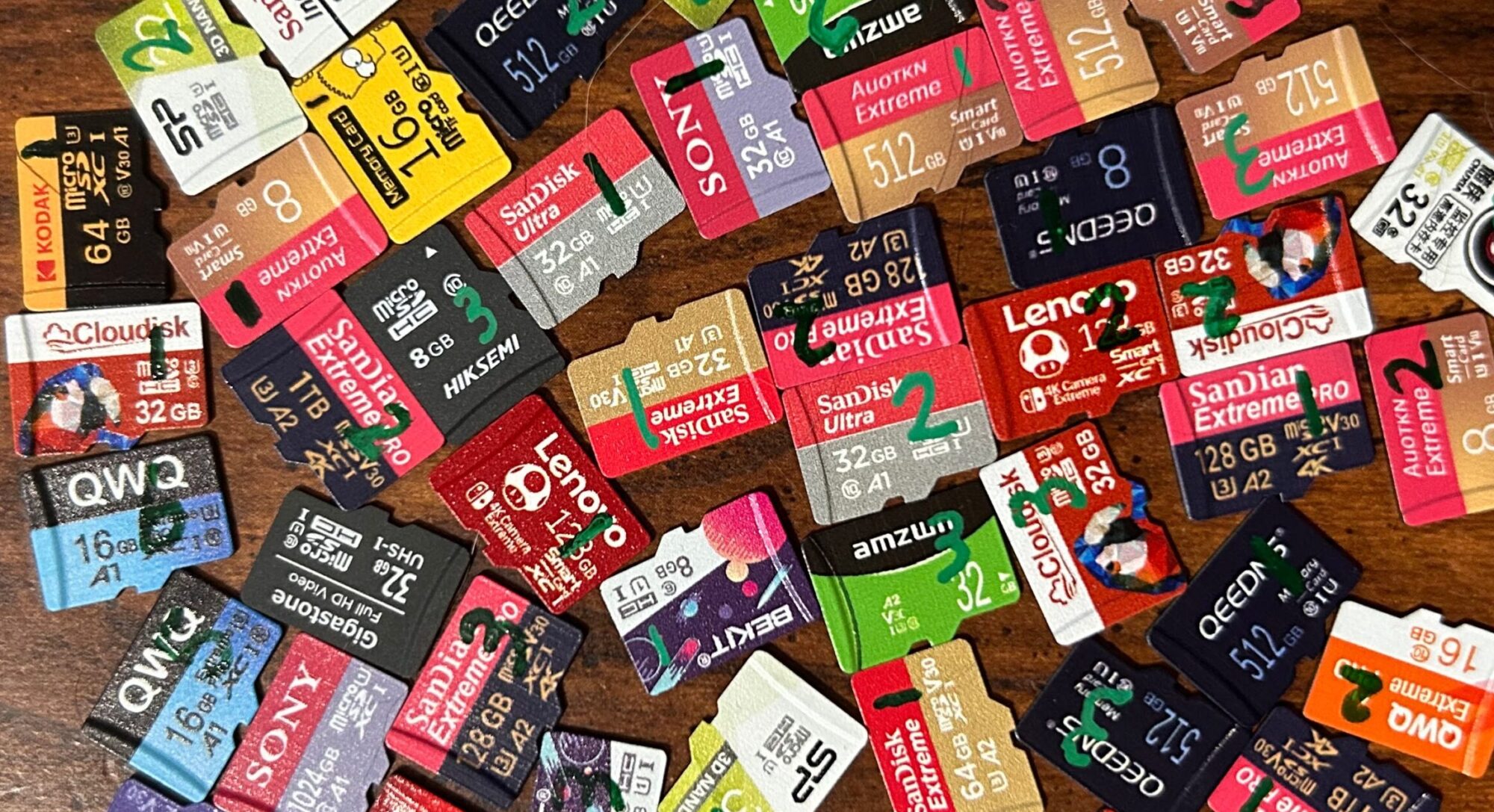Kioxia is a major brand that has its roots in Toshiba: they were originally the flash memory division of Toshiba, and were actually credited with having invented flash media. I purchased this card after having run performance tests on the Kioxia Exceria G2’s — after those cards did well, I was curious to see what else Kioxia had to offer.
These cards met all the criteria that I set out for determining what’s considered a name-brand card, so they’ll go into the name-brand bin.
At the time I first started working with these cards, they set a new record for skimp in an authentic card, at 3.32% — beating out the previous contender, the Kioxia Exceria G2, at 3.30%. (The current record holder is sample #1 of the SomnAmbulist 128GB, at 25.45%.)
On the performance front: overall, these cards did worse than the Kioxia Exceria G2’s. Overall, performance was mixed:
- Sequential read: Sample #3’s sequential read speeds were just slightly above average, while samples #1 and #2 were slightly below average. The average of the three ended up being slightly below average. Scores fell between the 30th and 33rd percentiles.
- Sequential write: All three scores were above average, falling between the 78th and 82nd percentiles.
- Random read: All three scores were below average, falling between the 28th and 33rd percentiles.
- Random write: All three scores were a little bit above average, falling between the 68th and 75th percentiles.
These cards bear the U3 and V30 marks, and performance was enough to qualify for these marks. The package also bears the Class 10 and A1 marks; and while performance was good enough to qualify for the Class 10 mark, it wasn’t good enough to qualify for the A1 mark. Interestingly, most other cards that bear the A1 mark have less trouble meeting the threshold for random read operations, and more trouble meeting the threshold for random write operations. This card was the opposite: sample #2 met the 500 random write operations per second threshold, sample #1 came within 3% of that threshold, and sample #3 came just 0.01% short. Random read scores, on the other hand, were farther off the mark: the best out of the three measurements came about 10% short of the 1,500 IOPS needed. I’ll throw in my standard disclaimer here: my performance testing methods do not align with those prescribed by the SD standard; it’s possible that these cards would have done better had they been tested under proper conditions.
On the endurance testing front:
- Sample #1’s first error was a four-sector wide address decoding error during round 2,319. It has survived 17,778 read/write cycles in total so far.
- Sample #2’s first error was a 1,568-sector wide data verification error during round 2,315; it has survived 24,489 read/write cycles in total so far.
- Sample #3’s first error was a four-sector wide address decoding error during round 1,612; it has survived 13,660 read/write cycles in total so far.
Overall, this seems to be a decent card. It has done well on endurance tests, with all three cards having surpassed 10,000 read/write cycles completed, and none of them has come anywhere close to the 0.1% failure threshold. In terms of performance — it suffers in read speeds, but it makes up for it by delivering superior write speeds. However, the Kioxia Exceria G2 scored better in all metrics that I measured — and was almost half the price. If I had to choose between the two in the future, I’d definitely go for the G2 over this one.
September 27, 2025 (current number of read/write cycles is updated automatically every hour)

